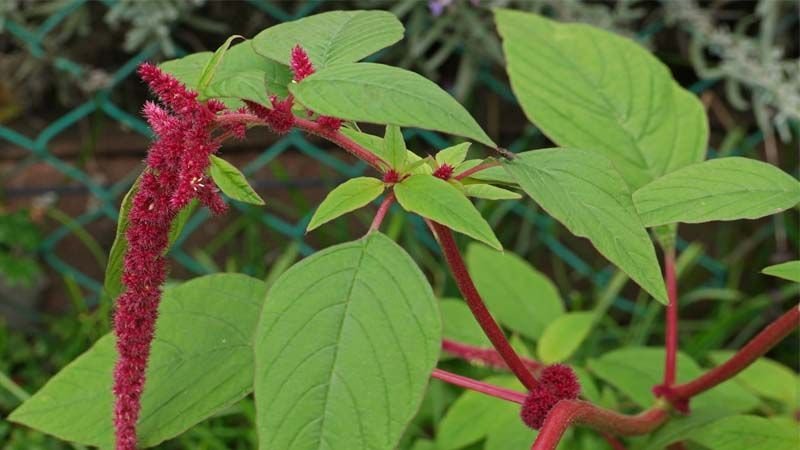Amaranths are a popular organization of plant life, botanically referred to as genus ‘Amaranthus’ of Family ‘Amaranthaceae’. Amaranths are in general erect annual herbs or short-lived perennials. Approximately 60 species are recognized, with inflorescences and foliage ranging from red, via red and inexperienced to gold. Amaranth can be grown during the yr in India. It grows well in hot Indian summers.
All information of plants, flowers & seeds on Flowerworld.in & also on Facebook & Instagram
The Amaranthus genus is a complex one, presenting at the least seventy five annual and perennial species that without difficulty move-breed and hybridize. Today, most gardeners are acquainted with the species as ornamental vegetation. And lots of do not even understand that amaranths are also edible plants that can be grown for his or her grain-like seeds and fit to be eaten leaves. This become once the primary cause amaranth served as a staple in domestic cottage gardens. The use of amaranth as an ornamental plant is a enormously latest development within the plant’s records.
Amaranthus is referred to as cosmopolitan genus due to the wide variety of species. These are recognized for their extensive range of usefulness and financial importance. Many Amaranths are traditional leafy vegetables, grains of a few Amaranth species are fed on as cereals. There are some beautiful flowering & foliage decorative Amaranths. After which there are such a lot of Amaranth species which are summer time annual weeds and are typically called Pigweed.

Amaranths as leafy veggies: Amaranth is hardy, easy to develop green vegetable that is cooked and fed on
like spinach. There are many varieties with tender leaves, available in inexperienced and pink colour. Popularly called ‘Chauli’ & ‘Math’ in India. Cooked amaranth leaves are an brilliant supply of vitamin A, diet C, calcium,
manganese, and folic acid.
How to care Amaranth
Amaranth grows well in any average well-drained soil, and you should make sure the site you choose has good drainage and air circulation. To ensure continued production, it’s a good idea to stagger planting every two to three weeks, beginning a week or two after the last frost date in your region.
While amaranth plants are tall, they aren’t necessarily wide or bushy, so you can get away with planting them 10 to 18 inches apart. The closer you can get them, the better they look once fully grown. At the same time, they need
enough space to provide good air circulation.
Varieties of Amaranth
Varieties of amaranth can variety from giants topping eight toes tall, to smaller 1- to two-foot vegetation higher suitable for leaf harvest best. You have to domesticate larger plant life specifically grown for his or her seeds if you want the amaranth grain. Some famous varieties encompass:
Red-leaf amaranth (Amaranthus tricolor): This varietal has specially nutritious foliage that tastes like slightly tangy spinach. ‘Molten Fire’ and ‘Joseph’s Coat’ are popular cultivars of this species.
‘Burgundy’ (A. Hypochondriacus): Stunning purple leaves, crimson vegetation, and
Red-leaf amaranth (Amaranthus tricolor): This varietal has specially nutritious foliage that tastes like slightly tangy spinach. ‘Molten Fire’ and ‘Joseph’s Coat’ are popular cultivars of this species.
‘Burgundy’ (A. Hypochondriacus): Stunning purple leaves, crimson vegetation, and white seeds beautify this varietal.
‘Hopi Red Dye’ (A. Cruentus): An heirloom species, it produces extremely good protein-wealthy black seeds.
How to grow Amaranth
When planting amaranth outdoors, sow seeds about 4 inches aside, slightly protecting them with soil. Germination generally takes seven to 14 days. As they sprout, skinny the plants out to a spacing of 10 to 18 inches.
If beginning seeds interior, you can use a fashionable seed-starting mix and make certain to harden off the seedlings earlier than transplanting them outside. The average out of doors temperature wishes to reach about fifty five tiers Fahrenheit earlier than you may successfully plant the seedlings outdoors.
Amaranth does fine in complete solar inside the northern part of its variety, but in heat southern climates, it could gain from a few colour in the afternoon.Amaranth grows well in average soils and will even develop properly in negative soils. Amaranth vegetation have average wishes for water, requiring no greater than 1 inch in step with week. Take care now not to overwater your plant, or you run the chance of root rot or fungal sicknesses.Unlike other leafy inexperienced veggies, amaranth is fairly glad within the warmth.Amaranth would not require any additional feeding. Excessive nitrogen can cause the flowers to turn out to be leggy and less appropriate for harvesting.
Pests & Disease
Aphids and weevils are commonplace; insecticidal soaps are a great remedy for the former, and floating row covers will protect the plants from the latter. Avoid the use of business pesticides with a “wait to choose” or every other sort of warning regarding consumption.